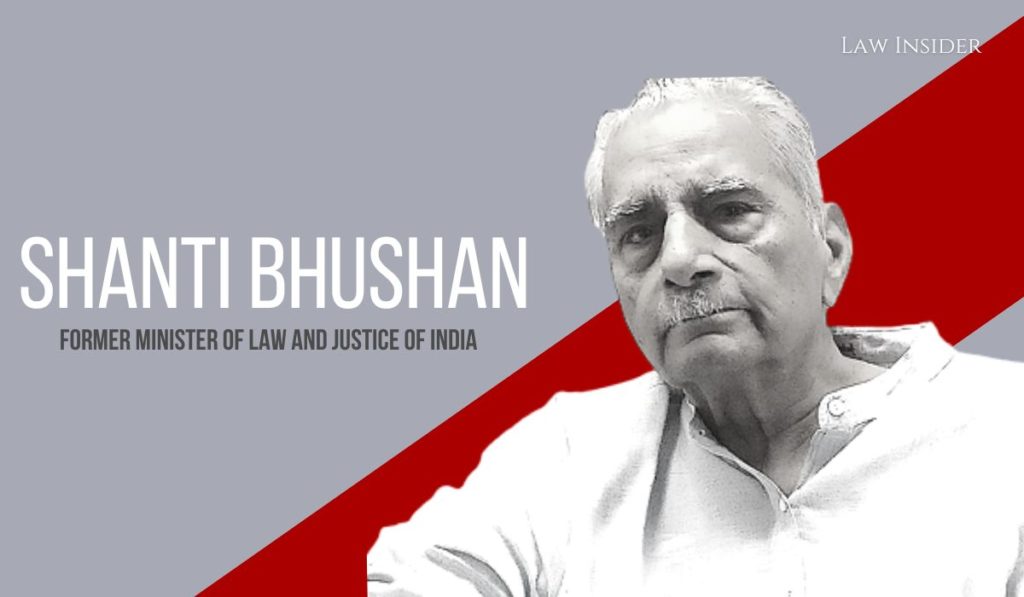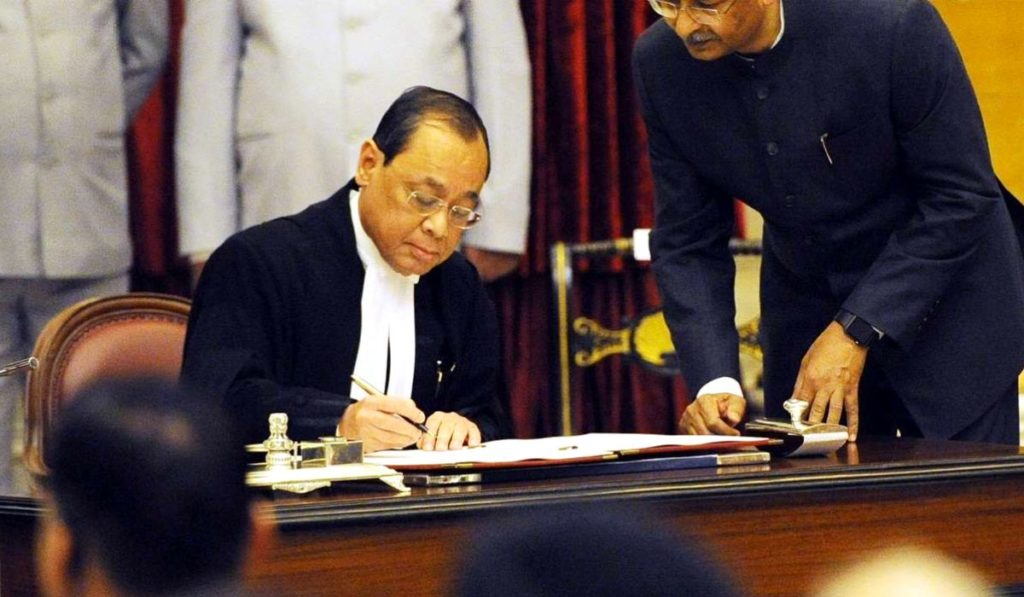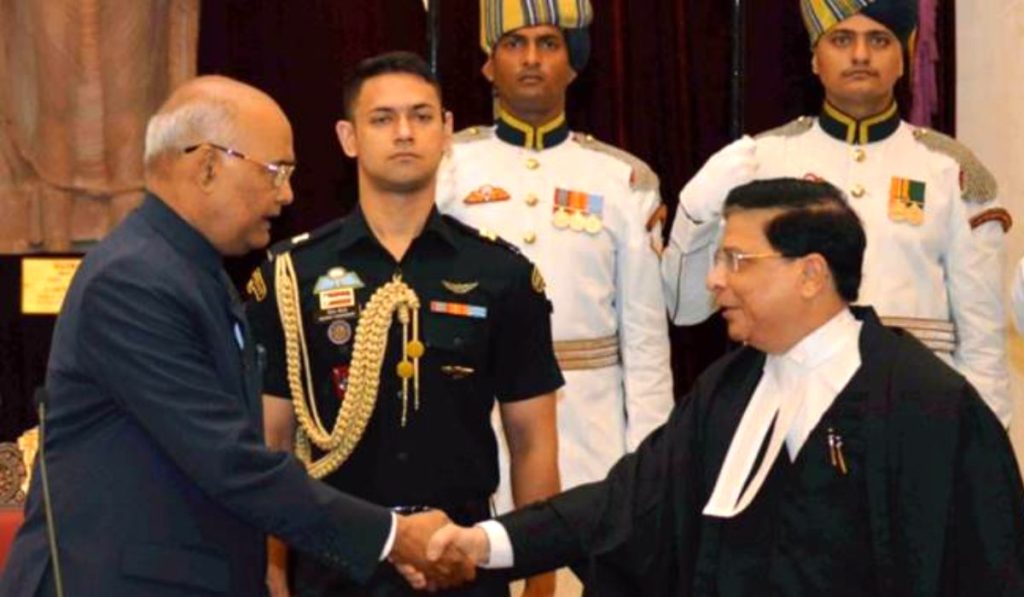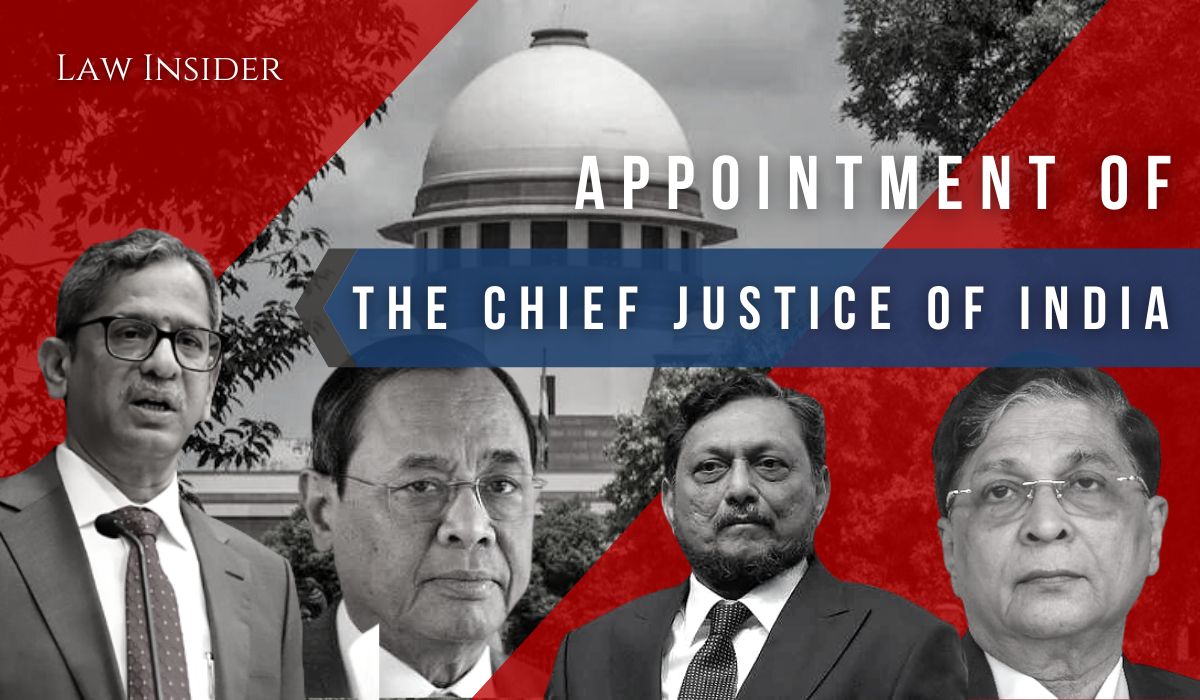Lokendra Malik, Advocate, Supreme Court of India
Published on: June 23, 2022 at 00:07 IST
The Chief Justice of India Mr N V Ramana is going to retire on 26 August this year after completing a tenure of one year and four months. Thereafter, as per the seniority convention, Justice U. U. Lalit, the senior-most judge of the Supreme Court after CJI, is likely to become the Chief Justice of India (CJI).
Generally, the Union Law Minister initiates the process to appoint the Chief Justice of India. The Law Minister writes a letter to the CJI to seek his view about his successor. This is purely a courtesy. It has no constitutional backing. The government is not bound to seek the view of the Chief Justice of India about his successor.
On the other hand, the CJI can also refuse to suggest any name to the government. However, in general practice, the CJI recommends the name of his successor to the Law Minister who forwards the same to the Prime Minister who advises the President of India to appoint the recommended person to the office of the Chief Justice of India.
The seniority-based appointment is not constitutionally sanctioned. It is based on a healthy constitutional convention which has been broken two times during the Indira Gandhi government’s tenure in the 1970s. But now this convention is approved by the Supreme Court in the Second Judges’ case (1993) and it is difficult for the government to breach it. This paper throws light on the various facets of the appointment process of the Chief Justice of India.
The Central Government has consistently followed the seniority convention in the appointment of the Chief Justice of India ever since the commencement of the Constitution. However, it is also heard that the first Prime Minister Pandit Jawaharlal Nehru had tried to supersede some senior judges of the Apex Court during the initial years, but he could not be successful in his plans as all the judges of the Supreme Court had opposed such a move strongly.
It is also said that once upon a time, he had also thought to appoint then Attorney-General M. C. Setalvad to the office of the Chief Justice of India, but the latter was found over-age. The First Law Commission led by then Attorney-General M. C. Setalvad, in its 14th report, had also indicated some deviations from the seniority convention but the Nehru government did not accept such recommendation and continued to appoint the senior-most judge to the office of the Chief Justice of India.
But Mrs. Indira Gandhi did not hesitate to breach this seniority convention two times. First in 1973, after the famous Kesavananda Bharati judgment, she superseded three senior judges namely Justices Shelat, Hegde, and Grover, and appointed their junior colleague A. N. Ray as the Chief Justice of India. All three senior judges resigned in protest. This was referred to as the ‘first judicial supersession’ in the country.
The fault of these judges was only that they had decided some important cases including the Kesavananda Bharti case against the Indira Gandhi government while Justice A. N. Ray was considered a pro-government judge who mostly decided cases in favor of the government.
The judgments of the 13-judges Constitution Bench in the Fundamental Rights case were delivered on 24 April 1973. The majority judgments of 7 judges held that Parliament had no power to alter or destroy “the basic structure of the Constitution” while amending the Constitution under Article 368 of the Constitution. On the other hand, six other judges including Justice A. N. Ray held that there were no restrictions on Parliament’s power to amend the Constitution.
Then Chief Justice of India Mr. S. M. Sikri, who led the majority judgment, was to retire the next day. Coming to know of the judgment in this case, the Indira Gandhi government disregarded the seniority of three judges who had been part of the majority-Justices J. M. Shelat, K. S. Hegde and A.N.Grover-and appointed Justice A. N. Ray, who was fourth in the seniority order, the Chief Justice of India.
This supersession was intended to send a clear signal to the judges that an important judgment against the central government would imperil their careers. Some constitutional pundits call it the first executive assault on the Indian judiciary to surrender before the government.
Unfortunately, hardly had the controversy of the first supersession died away, then Prime Minister Mrs. Indira Gandhi superseded Justice H. R. Khanna and appointed his junior colleague Justice M. H. Beg to the office of the Chief Justice of India in January 1977. Predictably, Justice Khanna resigned in protest. The constitutional scholars and political commentators call it ‘the second judicial supersession’.
These two back-to-back supersessions shook the Indian judiciary badly and demoralized the honest judges who delivered judgments against the government. Like Justice Ray, Justice Beg was also considered a committed judge who never displeased the government and always fell in line with the ideology and requirements of the ruling dispensation. It was perceived that Justice H. R. Khanna was superseded for delivering a courageous dissenting judgment in the infamous ADM, Jabalpur case.
Sadly, this time Chief Justice A. N. Ray had himself recommended the name of Justice M. H. Beg to the government. This is deeply condemnable that a Chief Justice of India himself helped the government to violate the independence of the judiciary and breached the seniority convention.
Many prominent jurists such as Nani Palkhivala, Justice Chagla, and others had criticized these two judicial supersessions loudly. The appointment of Chief Justice Ray was also challenged by P. L. Lakhanpal in the High Court of Delhi but the High Court had dismissed the petition.
Eminent jurist H. M. Seervai states that “the supersession of three judges in 1973, and Justice Khanna in 1977, was not only meant to punish them for their judgments, but was intended to get rid of them by wounding their self-respect, and forcing them to resign-and the attempt succeeded.”(H. M. Seervai, Constitutional Law of India, Vol. 3, 4th Edn. 1996, at p. 2816)
In 1977, the Janata Party came into power in the Centre. The leaders of the Janata Party expressed their objections against Justice Y. V. Chandrachud’s elevation to the office of the Chief Justice of India in 1978 when many Janata Party leaders, lawyers, and social activists raised concerns and objections against his appointment because Justice Chandrachud was the part of the majority of judges who had delivered the ADM, Jabalpur judgment.
But then Union Law Minister Shanti Bhushan wisely handled the situation and saved his chief justiceship. In the infamous ADM Jabalpur case, four majority judges had denied relief to the people who were detained under the Maintenance of Internal Security Act, 1971, and lakhs of people had languished in jail for several months as the President of India had suspended the enforcement of the fundamental rights of the people under Article 359 of the Constitution.
Thousands of Janata Party supporters had also spent almost nineteen months in jail because of the impact of this judgment. Not only ordinary Janata Party leaders but even Jaiprakash Narain, a stalwart of the Janata Party, had also written to the government to supersede Justice Chandrachud at that time. Then Prime Minister Morarji Desai rejected all such demands and cleared Justice Chandrachud’s appointment to the office of the Chief Justice of India by following the seniority principle.

Mr. Shanti Bhushan, then Union Law Minister, narrates that interesting story in his memoirs titled Courting Destiny at (page 188): “I sent a note to Prime Minister Morarji Desai recommending the elevation of Justice Chandrachud by drawing his attention to the almost total judicial consensus in the country that the principle of seniority should be followed.”
“ The Prime Minister unhesitatingly accepted my advice and Justice Chandrachud was appointed as Chief Justice of India. Since by this time the views of Jayaprakash Narayan were known to the press, no dissenting voices were raised in Parliament.”
The Central Law Commission, in its 80th report, also recommended to the central government follow the seniority principle in the appointment of the Chief Justice of India. The Commission recommended that there should be no departure from the seniority convention while appointing the Chief Justice of India. The report of the Law Commission was well appreciated by the legal fraternity in the country.
After Justice Chandrachud’s retirement, Justice P. N. Bhagwati became the Chief Justice of India in 1985 based on the seniority norm. Despite having some differences with Justice Bhagwati, Chief Justice Y V Chandrachud had recommended his name to the Central Government. Justice Bhagwati was also part of four judges in the ADM Jabalpur case. Many people were unhappy with him also.
It was widely perceived that he had surrendered before the government in the Habeas Corpus case to save his future chief justiceship. He regretted this judgment after thirty-five years in an interview with the media. But it was a much-delayed apology. The damage was already done. However, as a judge, he delivered many landmark judgments that gave him a great name and fame also. The legal community admires him a lot for his contribution to the Public Interest Litigation movement.

After many years the ghost of judicial supersession once again appeared in 2018 when many people speculated about the supersession of Justice Ranjan Gogoi who had participated in the unprecedented judges’ press conference against the then Chief Justice Dipak Misra in January 2018 along with three of his colleagues Justices Chelameswar, Lokur, and Joseph who had serious differences with Chief Justice Misra on several issues including his powers as the master of roster and allocation of important cases to junior judges.

But Justice Misra followed the seniority convention and passed the baton of the apex court to Justice Gogoi as his successor and the central government appointed Justice Gogoi as the Chief Justice of India.
Notably, in 1993, the Supreme Court of India also approved the seniority convention in the Second Judges case. (Supreme Court Bar Association v. Union of India, (1993) 4 SCC 441). This matter did not come directly before the Supreme Court till 1993. It was only in 1993 that a nine-judge Constitution Bench of the Supreme Court accepted this seniority convention and held that as a matter of rule, the senior-most judge of the Supreme Court shall always be appointed as the Chief Justice of India if he is otherwise fit to be so appointed. This ruling has set all controversies relating to the appointment norms for the office of the Chief Justice of India at rest. Now, this convention of appointing the senior-most judge as the Chief Justice of India is well-settled and it will be very difficult, if not impossible, for the central government to depart from this seniority rule while appointing the Chief Justice of India.
Given the above discussion, it is submitted that the seniority-based appointment to the office of the Chief Justice of India seems to be quite safe and there is no reason to discontinue it. There is no need to disturb this reasonable practice which eliminates the interference of the executive in the appointment of the Chief Justice of India, who is the head of the judicial branch in the country. This convention protects the judiciary from executive assaults up to a large extent.
It also enhances the confidence of honest judges who decide cases without any fear or favor as per the letter and spirit of their oath of office. The executive should not be allowed to influence the appointment process of the Chief Justice of India given the collective interests of the judiciary and the great powers and responsibilities of the CJI.
But along with the seniority convention, the fitness of the judge is also a criterion that matters a lot while making an appointment to the highest judicial office in the country. Undoubtedly, the senior-most judge should be physically and mentally fit to discharge the functions of his high constitutional office that needs a high caliber and legal acumen.
As the government is the biggest litigant in the courts of law, it would be very dangerous if any discretion is given to the government in the appointment of the Chief Justice of India. There does not seem to be a better alternative to the seniority convention for appointing the Chief Justice of India.
Also Read- The President of India is not a Rubber Stamp at All

